New reason to fear ticks: Extreme food allergy possible from single bite
Emergency room visits for tick bites spike from April to June.
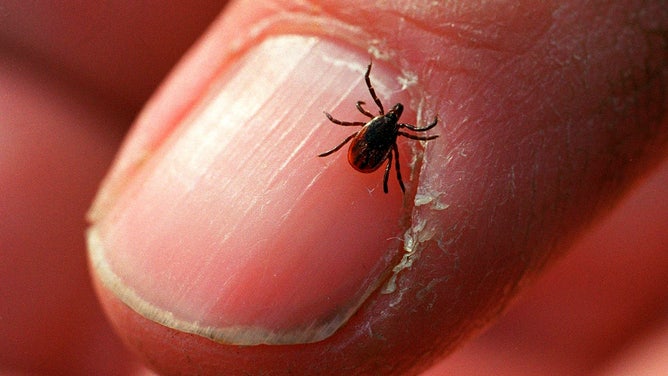
An adult deer tick.
(Photo by Bill Davis/Newsday RM via Getty Images)
Now there's a new reason to fear tick bites. It's a potentially deadly allergy that starts with the dreaded insects. Once people are exposed, they can be stuck with a horrific food allergy for years or life.
Disease-bearing ticks lurk in grasses and wooded areas across most of the U.S. and tick-borne diseases are on the rise according to the Centers for Disease Control and Prevention as spring warmth brings out the ticks.

The graph measures the number of Emergency Department visits by month per 100,000 Emergency Department visits.
(Centers for Disease Control and Prevention)
"I looked like a monster when I went in there," said Brenda Thomas of her first visit to the emergency room for the allergy. "The hives were on my scalp, they were in my ears, in between my fingers. It was the worst allergic reaction I've ever, ever had. But, we had no idea at the time what it was."
Thomas suffered allergic reactions and endured ER visits for a year and a half before she finally found an allergy specialist who discovered she developed an allergy to meat from a lone star tick bite. A blood test confirmed Thomas suffered from Alpha-gal syndrome.
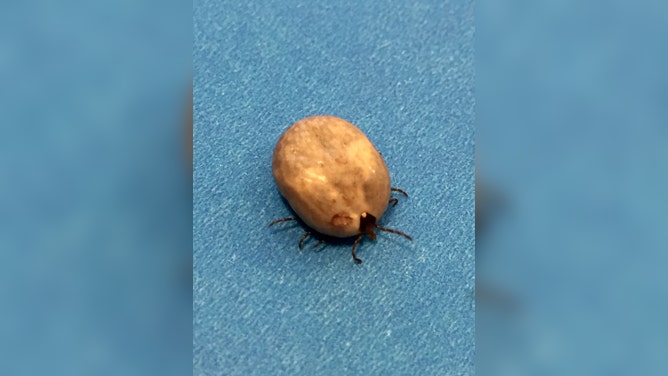
An engorged adult female lone star tick.
( IMAGE POINT FR/NIH/NIAID/BSIP //Universal Images Group via Getty Images / Getty Images)
"I never saw the tick. I never realized I had even been bitten by a tick," said Thomas. "That's the odd thing. I have no inkling when I was infected."
Thomas since learned that two others in her rural Virginia neighborhood also contracted the syndrome.
The ticks can pick up the alpha-gal carbohydrate from a previous mammalian host and transfer the sugar to humans through saliva during a bite or feeding. The transfer can take hours or up to a day, according to the CDC.
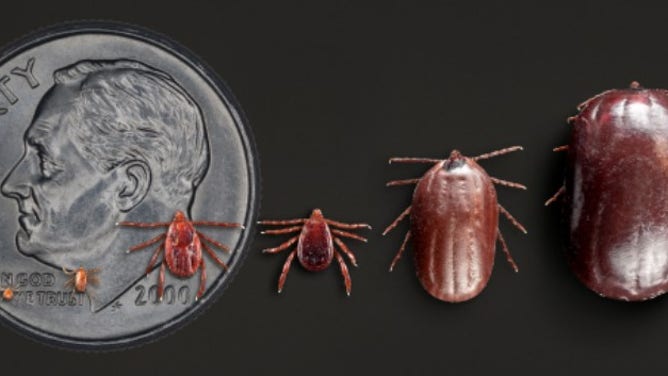
The photo shows the life stages of a brown dog tick. From far left see the larva, nymph, adult male, adult female, partially engorged adult female and engorged adult female.
Some people’s immune systems release antibodies to combat the foreign substances such as alpha-gal carbohydrates. As with Thomas, each time she eats meat, milk or gelatin, those antibodies attack and can cause hives, swelling, headaches and anaphylaxis. She has passed out before on the way to the hospital and had to call an ambulance after having trouble breathing because her throat was swelling.
The allergic reaction can take up to eight hours after eating meat, so most people can’t identify what caused the reaction.
There is no cure for Alpha-gal syndrome. Thomas goes for yearly testing. After several years, her doctor said her antibody levels are not low enough to allow her to eat meat safely yet. "Even if he told me I could eat red meat, I don't think I would because I don't think I want to go to take that chance again," said Thomas.

The yellow area shows the extent of lone star tick populations across the nation. Tick abundance varies locally within the region.
(Centers for Disease Control and Protection)
The lone star tick earned its name from the distinctive white dot on the back of females. It is widely found across the eastern half of the nation in grassy, shrubby and wooded areas, but it has been moving farther north and west bringing trouble with it.
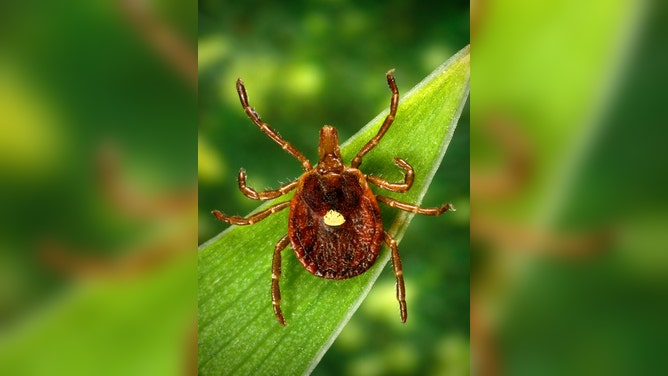
A photo of the female lone star tick.
(Photo by Smith Collection/Gado/Getty Images)
"Ticks ‘quest,’ they hang on some vegetation with their back legs while holding out front legs to grasp a host that walks by," said Amy Korman, Ph.D., Extension Educator with PennSate Extension and entomology expert.
Need for blood
Birds, deer, dogs, humans even reptiles and amphibians host ticks. All ticks need a blood meal to grow from one life stage to the next. "The larva feeds on small rodents. The next stages, the nymph and adult, prefer larger hosts," said Korman.
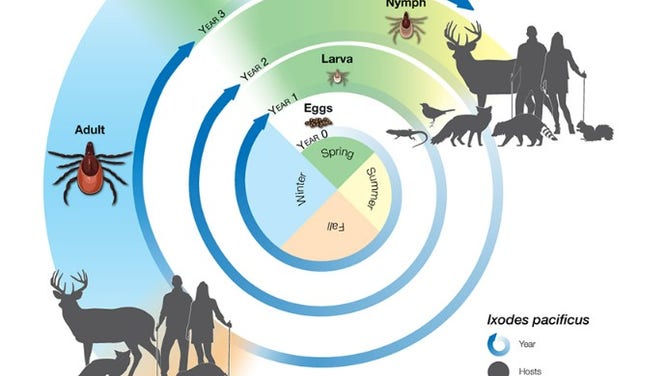
The CDC shows the lifecycle of one of the Lyme disease spreading ticks which prefer smaller animals as eggs and larva then graduate to humans and larger mammals as nymphs and adults during their three years.
(Centers for Disease Control and Prevention)
The CDC lists many tick-borne diseases, the most common is Lyme Disease, a bacterial infection. The CDC estimates that 476,000 Americans were diagnosed and treated for Lyme disease in 2021.
"Depending on the location 1%-50% of black-legged ticks may have the bacteria," said Korman.
Black-legged ticks take 1-2 days to transmit the bacteria. Antibiotics can arrest the disease if caught very early. If not treated immediately, people could suffer inflammation of the brain and spinal cord, heart palpitations, arthritis with severe swelling and pain, shooting nerve pain and facial palsy (loss of muscle tone or droop of face).

Each dot represents one confirmed case of Lyme disease in 2019.
"A neighbor has Lyme disease pretty bad," said Thomas. "She ended up having to quit her job and she's almost disabled."
What to do if you find a tick
Remove a tick immediately if you find one on your body, advises the CDC. Grasp the tick as close to the head as possible with a pair of fine-tipped tweezers and steadily pull. Don’t jerk, twist or crush the tick. Make sure to remove the head from the skin.
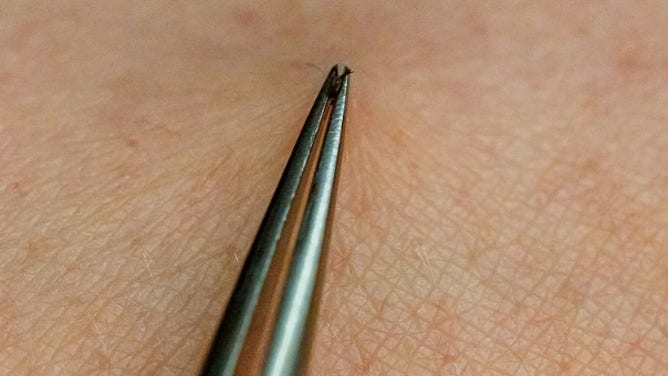
Grasp tick with tweezers as close to head/skin as possible and pull at a steady rate.
(New York State Department of Health/Mike Wren)
Wash the wound and your hands with soap and water or rubbing alcohol. Dispose of the insect by flushing it down the toilet, sealing it in a bag or put in alcohol before throwing away.
The Virginia Department of Health said you could preserve the tick by freezing it in a plastic bag or adding alcohol to the sealed bag to identify the species. But, the CDC stated that not all lab results are high quality and should not be used for medical treatment decisions.
Most people, they stated, would develop symptoms before the lab results would return. So, monitor the wound and nearby skin for rash and yourself for fever, chills, headache, fatigue, muscle and joint ache and swollen lymph nodes.
"I often find ticks on myself, it comes with the job," said Korman. "I wouldn’t see a physician unless I got sick or noticed something unusual."
Korman directs those looking for tick testing to the Wildlife Genetics Institute at East Stroudsburg University.
Tick season tends to spike in warmer weather
Dr. Andrew Handel explains why tick season tends to spike in warmer weather.
Prevent tick bites
Avoid wooded and brushy areas with high grass and leaves to avoid the ticks. Those who camp, hike, garden and hunt should take precautions, according to the CDC:
- Wear long pants and sleeves
- Treat clothing, boots and camping equipment with permethrin (at least 0.5%) products. Read the instructions, the repellant still works after several washings.
- Use an EPA registered repellant containing DEET, picaridin, IR3535, Oil of Lemon Eucalyptus, para-menthane-diol or 2-undecanone. The EPA has an easy site for reference: Find the Repellant that is Right for You.
When you return home, check for ticks:
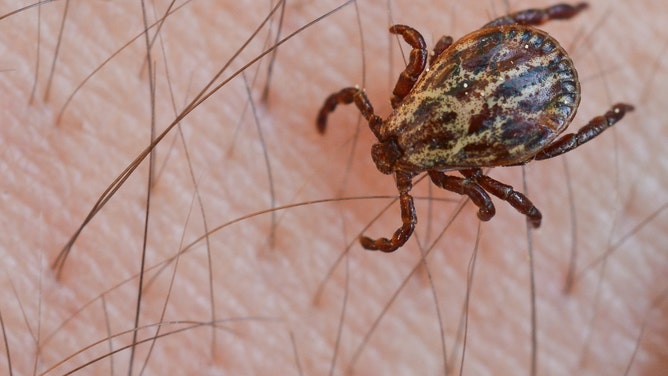
A tick crawling on the hairy arm of a man before going for blood.
(Photo by Patrick Pleul/picture alliance via Getty Images / Getty Images)
- Check all pets, clothes, gear and backpacks for hitchhiking ticks.
- Wash clothes in hot water or tumbling on high heat in the dryer for 10 minutes (longer if clothes are damp.)
- Shower to remove lose ticks.
- Check your body in the mirror, especially: underarms, in and around ears, belly button, back of knees, in and around the hair, between the legs and around your waist. Don’t forget to check the kids too.
If you are bitten by a tick and have allergic reaction or underlying disease, contact your doctor immediately.
